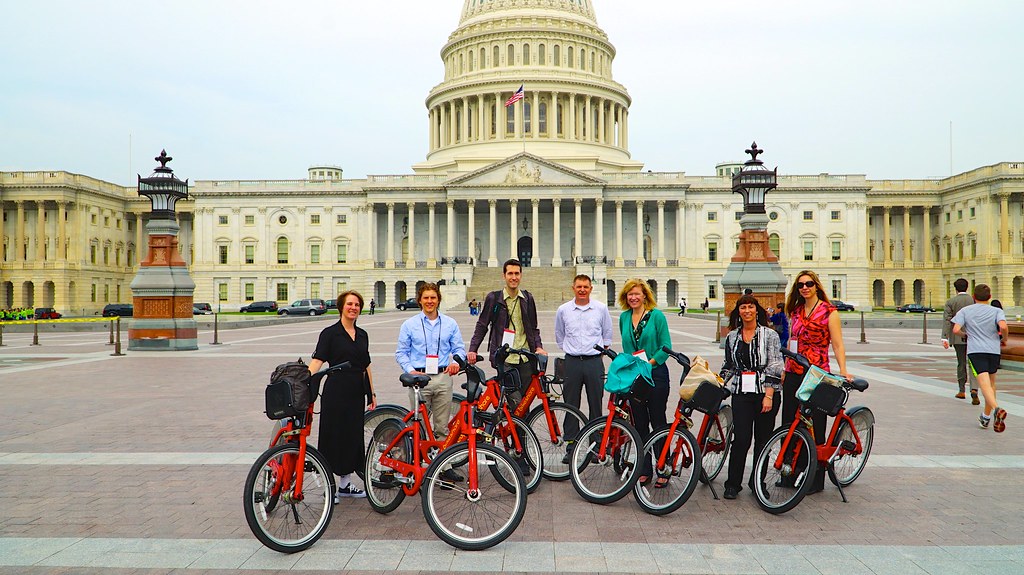
The best safaris happen via active transportation – View on Flickr.
Every Innovation Learning Network meeting includes a series of what we call “Innovation Safaris.” Our task in developing the safaris for this meeting were adventures that are slightly atypical, not necessarily health care focused, but with a lot of lessons for people developing ideas and executing them well.
Capital Bikeshare (@bikeshare) is the iconic, loved, almost-largest bicycle sharing system in our nation’s capital. Our guide, Charlie Denney from Alta Planning (@AltaPlanning) took our group on an safari via active transportation to the bikeshare warehouse in southwest Washington, DC, where we met and spoke with Eric Gilliland who is General Manager of the system.
Along with colleagues from other health systems (including the Military) and industries (including retail, Nordstrom), we learned about the history of Bikeshare and how it’s changing the landscape of cities all over the world:
The stations and bikes are ubiquitous, with 320 currently in the DC/MD/VA area. The system replaces a less-successful system called SmartBike that only had 100 bikes at 10 stations. From the blog-wayback machine, you can see what those looked like, back in 2008 (with photos!): Photo Friday: Washington, DC is the first North American city to launch bike sharing | Ted Eytan, MD
- The bike is designed for safety. Riders are upright, speed is limited, and they are sturdy. There are 100 reported crashes out of nearly 7,000,000 rides so far.
- The system is marketed to riders who are “interested but concerned” about bicycling, which is about 60% of the potential rider pool. I fall into that category because I desire safety and don’t want to have a piece of property vulnerable on our streets.
- Bikeshare and biking, supports the “first and last mile” of trips that utilize active transportation. This is a long enough distance that many people won’t walk (my limit is 3 miles…), short enough that people can convert from passive transportation.
- The possibilities for employers, including the military are quite interesting. We got to see a special one-of-a-kind camo bike built for the U.S. Army, and other built for the U.S. Navy. Imagine bikesharing as part of the healthy base initiative No better way to visibly promote health.
Photos below, so you can see what goes into producing this much health in cities around the world. We are fans. Thanks, Charlie, Eric, the Bike share team, and Washington, DC, for allowing us to experience you by bicycle!
3 Comments
RT @tedeytan: Post: Behind the Scenes at Capital @Bikeshare: @HealthcareILN #ILN14 Safari http://t.co/wcmOwXL592 @altabikeshare @altaplann…
From @tedetyan: Behind the Scenes at Capital Bikeshare: Innovation Learning Network 2014 Safari http://t.co/zUDXwFU07k #medicine
RT @tedeytan: Post: Behind the Scenes at Capital @Bikeshare: @HealthcareILN #ILN14 Safari http://t.co/wcmOwXL592 @altabikeshare @altaplann…